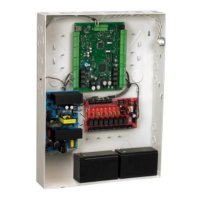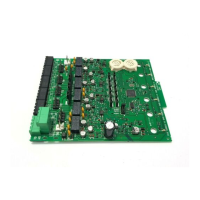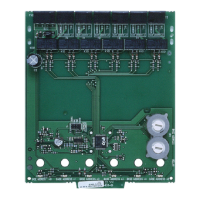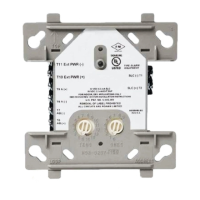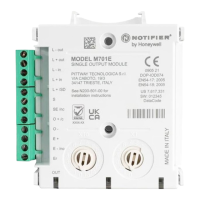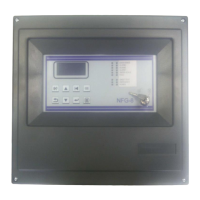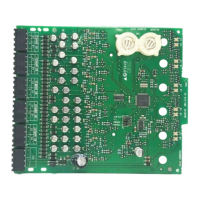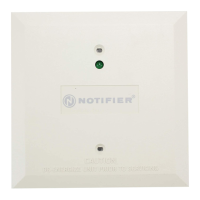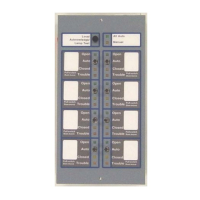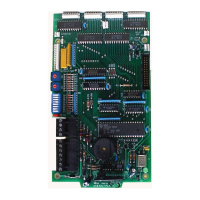Do you have a question about the Honeywell NetAXS and is the answer not in the manual?
Introduces the NetAXS™ access control system and its components.
Details steps for connecting a computer to the NetAXS™ web server via Ethernet.
Explains how to interpret the Select Panel status indicators on the web interface.
Explains NetAXS™ configuration functions via the web server and the critical task sequence.
Covers general, file management, network, site codes, downstream devices, and host/loop configurations.
Details setting current time, time zones, and holiday schedules for panel operations.
Explains configuration of readers, inputs, and outputs for each of the four doors.
Describes how to create, modify, and delete access levels assigned to cards.
Covers adding, displaying, modifying, and deleting card records and generating reports.
Details configuration of auxiliary inputs, outputs, and grouping them for synchronized control.
Explains how to create and manage programmed connections between system points.
Details creating, modifying, enabling/disabling, and viewing user accounts and roles.
Explains NetAXS™ configuration using the WIN-PAK Quick Start Wizard and manual configuration.
Guides through adding a NetAXS panel using WIN-PAK's Quick Start Wizard and manual setup.
Introduces the monitoring capabilities for alarms, events, inputs, outputs, and system status.
Explains how to view and interpret system-generated alarm messages.
Details monitoring panel and web-generated events, including card reads and user logins.
Describes how to monitor door, panel, and auxiliary input statuses and manage shunt/restore.
Covers viewing and managing the status of door and auxiliary outputs (energized, pulsed, etc.).
Provides monitoring of system objects like configured instances and maximum capacities.
Introduces the NetAXS™ access control system and its components.
Details steps for connecting a computer to the NetAXS™ web server via Ethernet.
Explains how to interpret the Select Panel status indicators on the web interface.
Explains NetAXS™ configuration functions via the web server and the critical task sequence.
Covers general, file management, network, site codes, downstream devices, and host/loop configurations.
Details setting current time, time zones, and holiday schedules for panel operations.
Explains configuration of readers, inputs, and outputs for each of the four doors.
Describes how to create, modify, and delete access levels assigned to cards.
Covers adding, displaying, modifying, and deleting card records and generating reports.
Details configuration of auxiliary inputs, outputs, and grouping them for synchronized control.
Explains how to create and manage programmed connections between system points.
Details creating, modifying, enabling/disabling, and viewing user accounts and roles.
Explains NetAXS™ configuration using the WIN-PAK Quick Start Wizard and manual configuration.
Guides through adding a NetAXS panel using WIN-PAK's Quick Start Wizard and manual setup.
Introduces the monitoring capabilities for alarms, events, inputs, outputs, and system status.
Explains how to view and interpret system-generated alarm messages.
Details monitoring panel and web-generated events, including card reads and user logins.
Describes how to monitor door, panel, and auxiliary input statuses and manage shunt/restore.
Covers viewing and managing the status of door and auxiliary outputs (energized, pulsed, etc.).
Provides monitoring of system objects like configured instances and maximum capacities.
| Category | Control Unit |
|---|---|
| Max. Number of Doors | 4 |
| Max. Number of Readers | 8 |
| Inputs | 8 |
| Outputs | 4 |
| Users | 10, 000 |
| Transaction Buffer | 50, 000 |
| Operating Voltage | 12-24 VDC |
| Network Interface | 10/100 Mbps Ethernet |
| Reader Technology | Magnetic Stripe, Barcode, Proximity, Smart Card |
| Communication | TCP/IP, RS-485 |
| Humidity | 5% to 85% RH, non-condensing |
| Weight | 3.5 lbs |
| Certifications | UL294, CE, FCC |
| Dimensions | 165 mm x 140 mm x 40 mm (6.5" x 5.5" x 1.6") |
